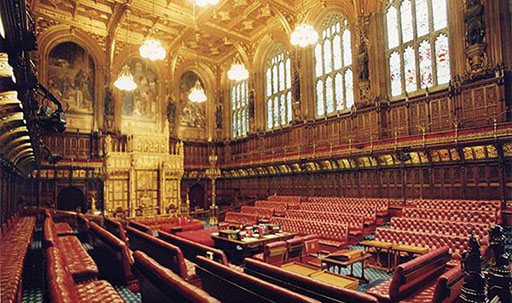4.4 The House of Lords
Originally the members of the House of Lords was comprised of those who had inherited a title (known as hereditary peers), senior judges who sat as Law Lords, and the most senior bishops in the country. During the twentieth century the awarding of a title for life (known as a life peerage) became more common. The Prime Minister nominated people who should receive a title for their lifetime only. In this way, people who had served the country and were thought to be suitable members of the House of Lords were able to bring their expertise to the House.

Most life peerages were given to former politicians who had retired from the House of Commons. For example, James Callaghan, who was Prime Minister from 1976 to 1979, was made a life peer in 1987, taking the title Lord Callaghan of Cardiff, while Margaret Thatcher, the first female Prime Minister, was made a life peer in 1992 and became known as Baroness Thatcher. When men are made life peers they are called lords; women life peers are called baronesses.
During the late 1990s the Labour Government decided that in a modern society an inherited title should not automatically allow someone to participate in making law. They felt that some of the members of the House of Lords should be elected and some should be nominated. The right of most of the hereditary peers to sit in the House of Lords was abolished in 1999. As a result of this change three types of peer now sit in the House of Lords: life Peers, Bishops and elected hereditary Peers.
The House of Lords is characterised by ‘independence of thought’. Some members (Peers) have a political background, most don’t. They represent a wide range of professions – including medicine, law, business, the arts, science, sports, education, the armed forces, diplomacy and public service.
Currently, there are about 825 members who are eligible to take part in the work of the House of Lords. The majority are life Peers. Others include 26 archbishops and bishops and 92 hereditary Peers. There is no upper limit on the total number of members.
- Life peers: the majority (about 700) of members are appointed for their lifetime by the Queen on the advice of the Prime Minister. Any British, Irish or Commonwealth citizen who is a UK resident and taxpayer over the age of 21 is eligible to be nominated or can apply to become a member, via the independent House of Lords Appointments Commission.
- Archbishops and bishops: 26 Church of England archbishops and bishops sit in the House. When they retire as bishops their membership of the House ceases and is passed on to the next most senior bishop.
- Elected hereditary members: the House of Lords Act 1999 ended the right of most hereditary peers to sit and vote in the House; 92 remain.
To learn more about the work of the House of Lords watch the following video.
